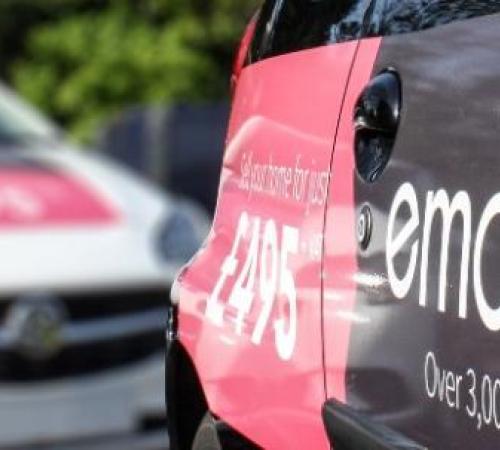
Fire safety guidelines for landlords

No matter how careful you are, accidents can happen. However, understanding and following good fire safety protocols and keeping tenants informed about fire safety can help you reduce fire risks, build trust, and ease tenant concerns.
Disclaimer:
This article is not an authoritative interpretation of the law and shouldn’t be used as such. It is intended as a general guide to help landlords understand their fire safety responsibilities. For specific legal advice and compliance requirements, please consult a qualified professional or refer to the relevant legislation.
Fire safety responsibilities for landlords
Fire safety rules, regulations, and responsibilities are outlined in various legislations, including:
- Regulatory Reform (Fire Safety) Order 2005 (external link)
- Fire Safety (England) Regulations 2022 (external link)
- Section 156 of the Building Safety Act 2022 (external link)
Fire safety rules and regulations may differ in Scotland (external link) and Northern Ireland. (external link)
There are various fire safety responsibilities for landlords, including:
Conducting comprehensive fire risk assessments
From October 2023, Section 156 of the Building Safety Act 2022 (external link) outlined new fire safety guidance that made it a legal requirement for all Responsible Persons to conduct comprehensive fire risk assessments.
You can check whether you are a person with duties under fire safety laws at GOV.UK (external link). This typically includes landlords of private rented accommodation.
A professional fire risk assessor typically performs this and can help you to identify and remove potential fire risks and hazards. This includes assessing the external walls, flat entrance doors and the buildings’ structure.
GOV.UK recommends following five steps and filling in its checklist.
These steps include:
- Identify potential fire hazards – check ignition sources or combustible materials that can start a fire, such as heating, cooking, and electrical equipment.
- Note people at risk – detail how many people are on the premises and whether there are any young, disabled, or lone workers present.
- Evaluate and act – note how many floors, staircases and exits are on the premises and whether fire alarms, fire exit signs and fire extinguishers are needed.
- Record, plan, and train – record what needs doing and when using the checklist provided.
- Review – update and review your fire risk assessment regularly, keeping a record of your review.
You may be required to share records of your fire safety arrangements with tenants.1
You can find the full checklist at GOV.UK (external link).
You can find a list of qualified fire risk assessors at The Institution of Fire Engineers. (external link)
Fire risk assessments are important because they can help landlords ensure they’re complying with various legal requirements.
For example, landlords must:
Make sure furniture and furnishings are fire-safe.
Permanent fire safety labels are legally required on most furniture. These symbols show furniture meets fire safety regulations (external link) and has been treated with fire-retardant chemicals.
Ensure direct and unobstructed access to escape routes, even in communal areas.
Everyone should know how to escape, and there should be enough exit routes for everyone to escape.2
Landlords are also legally required to follow gas and electric safety standards (external link). You must ensure all gas and electric appliances are safe and in good working order. This includes gas safety checks conducted by a Gas Safe registered engineer (external link) at least every year and electrical safety checks (external link) at least every five years.
Fire, gas, and electric safety are closely linked. For example, gas safety checks can help detect and prevent gas leaks, which can lead to fires. Electrical safety checks can prevent electrical fires and shocks.
Meeting all safety regulations can help you minimise the risk of fires in your rental property and stay legally compliant.
You can find more information in our guide to electrical safety for landlords.
Essential fire safety equipment
There are additional rules for houses in multiple occupation (HMOs) (external link) which are typically larger and house more people, potentially increasing risks.
Fire extinguishers and alarms are typically legally required (external link) in large HMOs (more than five tenants).3
In addition, ‘self-closing’ fire doors may be legally required at each entrance door of flats or HMOs which open onto shared communal areas. Doors to stairways and lobbies must also be fire-resistant. This can help protect critical escape routes if a fire breaks out.4
Installing and maintaining smoke alarms
The Smoke and Carbon Monoxide Alarm (England) Regulations 2015 (external link) outline the legal obligations of private landlords of accommodation under a tenancy.
Landlords must provide a smoke alarm on each floor with living accommodation. Typically, they should be installed on the ceiling in a circulation space, such as a hall or landing area. There are no regulations regarding which type of smoke alarms are allowed. However, GOV.UK (external link) recommends that landlords choose smoke alarms that are compliant with British Standards BS 5839-6.
A carbon monoxide alarm must also be provided in any room with a solid fuel appliance, such as a coal stove or fireplace. Typically, the alarm should be positioned at head height on a wall or shelf near the fuel source.
There are no regulations regarding which type of carbon monoxide alarms are allowed. However, GOV.UK (external link) recommends that they comply with British Standards BS 50291.
London Fire Brigade (external link) additionally recommends a heat detector in the kitchen and a smoke alarm in the living room or hallway of flats and houses to warn residents early.
Landlords must ensure the alarms are working at the start of each tenancy.5
GOV.UK (external link) recommends that landlords consider demonstrating how to test smoke and carbon monoxide alarms so that tenants can understand how and when to test the alarms.
Find guidance on how and when to test your smoke alarms at Fire Kills (external link).
Once informed, landlords must repair or replace faulty smoke and carbon monoxide alarms.
You can also find more information in our guide to landlords repair obligations.
You can also find general guidance on Smoke and Carbon Monoxide Regulations at GOV.UK (external link).
Fire safety violations
Most importantly, non-compliance with fire safety regulations puts tenants’ lives at risk.
Failure to comply with fire safety regulations can result in fines and legal action. Penalty charges vary depending on the violation.
For example, the penalty charge for breaching the Smoke and Carbon Monoxide Alarm Regulations must not exceed £5,000 (external link). However, major penalty fines have no limit (external link).
In addition, the Fire Safety Regulations 2022 (external link) is a criminal offence if the violation increases the risk of death or serious injury in the event of a fire.
Although rare, more serious cases can lead to banning orders, preventing the offender from renting out residential accommodation.6
For full details, you can refer to the GOV.UK guide on enforcement and sanctions for non-compliance (external link).
Additionally, insurance policies typically require landlords to meet fire safety standards as a condition of coverage. Fire safety violations can mean your insurance becomes invalid, and insurers may refuse to pay claims or cancel your policy.
To help ensure compliance and protect yourself, your tenants, and your property, you can conduct regular safety checks and promptly address any potential risks. Working with qualified fire safety professionals (external link) can help you understand and meet your legal fire safety obligations.
References
- https://www.gov.uk/government/publications/check-your-fire-safety-responsibilities-under-section-156-of-the-building-safety-act-2022/fire-safety-responsibilities-under-section-156-of-the-building-safety-act-2022
- https://fireengland.uk/fire-safety-law-work-and-public-places/planning-escape-routes
- https://www.gov.uk/private-renting/your-landlords-safety-responsibilities
- https://www.nrla.org.uk/news/the-complete-fire-safety-guide-for-landlords
- https://www.london-fire.gov.uk/safety/property-management/landlord-s-responsibilities/private-rented-sector-landlords
- https://england.shelter.org.uk/professional_resources/legal/housing_conditions/private_sector_enforcement/banning_orders_against_landlords_and_letting_agents






